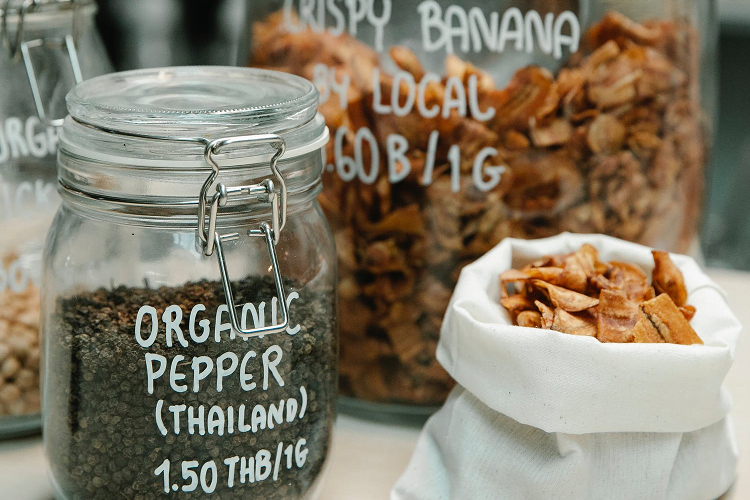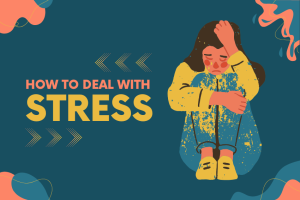When putting together a stockpile of emergency food for your family, it matters where you decide to store it. If something were to happen and you needed to tap into those emergency supplies, the last thing you need is to discover that your supplies were ruined because of how they were stored. It is usually recommended when putting together an emergency food supply that you store enough for a month or more, but this can take up a lot of space that many people simply do not have.
General Guide to Store Emergency Food
Many places throughout your home can be great to store emergency food, some more obvious than others. When you debate where to store your survival supplies, there are a few guidelines to keep in mind.
Temperature
You want to store your food in a cool location but not overly cold. When you walk into the area you wish to store your food, what does the temperature feel like for you? It should be safe for the food if it is comfortable or a little chilly; a little warm is also okay, but that can lower your shelf life. If the area is uncomfortably hot or cold, the food or its containers can get damaged. Ideally, you want to find an area with a stable temperature that is consistently above 32°F and below 70°F.
Humidity
If the area is humid, the food may end up moldy, and some of your containers can get damaged. Cardboard, paper, and other materials can get damaged in high humidity. You need to have humidity below 50 percent to keep your survival supplies from going bad.
Sunlight
You want a dark area to store your supplies. If the area has a lot of sunlight, it can damage the food and containers, and it has the potential to promote the growth of unwanted things, like molds and algae.
Airflow
An area with good airflow is more likely to stay dry and cool.
Pest Control
You also want an area that is hard for bugs and rodents to get into to store your food. If they manage to get into your supplies, they will be ruined quickly.
10 Best Place to Store Emergency Food
Here, we will look at some of the more common places to store emergency food and why they may or may not be a good location.

1. In the Basement
The basement is one of the obvious choices for an emergency food supply. The basement is usually cool and dark, but they tend to be more humid than is ideal for an emergency supply. If you select your basement, make sure you keep a dehumidifier running and check on your supplies to ensure they are all still safe.
If you choose the basement, do not store your supplies directly on the floor because it is more humid there, and there may be issues keeping the internal temperature regulated. Plus, there is always a risk of basement flooding, and if that happens, the food you have stored on the floor is ruined.
When using the basement for your emergency supplies, build some heavy-duty shelves to store everything on. If you need to put some of it on the floor, put pallets down first, so it is not directly on the floor. Also, make sure that you do not store anything in cardboard or paper packaging down there; instead, take the food out of the packaging and put it into sealed packages.
2. In the Garage
Many people choose to store their emergency food and supplies in their garage because garages often have a lot of extra storage space. However, it is not recommended to do so unless you do not have another choice. It is hard to keep the temperature and humidity of a garage under control. The temperatures fluctuate too frequently, and they can cause your food to go bad fast.
Garages also are not generally resistant to natural disasters and can become damaged easily, which can destroy your supplies or at least cut off your access to them. Additionally, another consideration is that if looting happens in your area, it can be easy to break into the garage to steal your supplies.
If you absolutely have to store your emergency supplies in the garage, make sure it is all canned or vacuum-sealed and stored in buckets. The best supplies to store in the garage are things such as toilet paper, soap, and water.
3. Under a Shed
Sheds are a great way to give yourself more storage space, but sometimes they can be problematic when storing food. They have many of the same drawbacks that garages do — they are hard to regulate the temperature and humidity, and they can be easy to break into. However, a steel shed can be the perfect solution for that. If your steel shed is insulated properly, it can keep the temperature and humidity inside better regulated. You can also give a steel shed a more secure door than a shed would typically have, and since steel is the strongest building material available, it is more likely to stand up against a hurricane, high winds, or an earthquake.
4. The Pantry or Closet
The great thing about using the pantry or a closet to store your emergency food is that it is easy to keep the temperature and humidity under control. If you have the space to do this, make sure you install heavy-duty shelves that are more likely to handle high winds and earthquakes. Make sure the door to the closet or pantry you are using for your supplies is also strong and harder to become damaged in a disaster.
5. Under the Stairs
If your home is two stories, and there is nothing under your stairs, you can convert the space into a closet and turn it into your emergency supply storage. You can even make it a secret closet with a hidden opening if you want to make it even more secure.
6. Under the Bed
In many homes, the space under the bed is wasted and becomes the home for dust bunnies. If you are not currently using the space under the beds in your home, it can be an excellent place to hide your emergency supplies. You may not have enough clearance for a full 30 days of supplies, but you may be able to store a few days’ worth of food there.
7. In Living Space
You probably do not want to have stacks of cans visible in your living room, but you can get creative with your decor to allow you to store your supplies throughout your home. If you have totes or crates with your supplies, you can cover them in a sheet or tablecloth and give yourself end tables. You can also get decorative trunks to place in the living room to store your supplies. Since it is in your living spaces, you probably have the temperatures and humidity regulated, but it will be something to keep an eye on.
8. In the Laundry Room
Laundry rooms often have a lot of wasted space that you can add shelving to in order to store supplies. The laundry room can sometimes be problematic since the rooms tend to heat up and get humid when running the washing machine. The laundry room is better for storing other supplies like toilet paper, but in a pinch, you can store emergency food in there; you will just need to keep an eye on it.
9. Using the Crawlspace
If you have a crawlspace, it can be a decent storage space for emergency food, so long as everything is completely sealed. Pests are usually in crawl spaces, so that is something to keep in mind, but it usually meets all of the requirements that we mentioned earlier.
10. In a Camper
Keeping your emergency food in a camper is often an attractive prospect since it will allow you to drive off with everything you need quickly. However, campers are not ideal for storing food. They are sensitive to external temperatures, so you can have similar issues to storing your food in a garage. If you have an RV garage with climate control, keeping your supplies in your camper can be perfect.
Final Thoughts
We hope that this guide will help you choose the best locations for your emergency food storage so that your supplies will be secure and less likely to go bad or be eaten by pests while it is sitting in storage. No matter what location you choose to store your food, make sure it is somewhere you can control the humidity and temperature, it is dark, has airflow, and no bugs or rodents can get to it.


